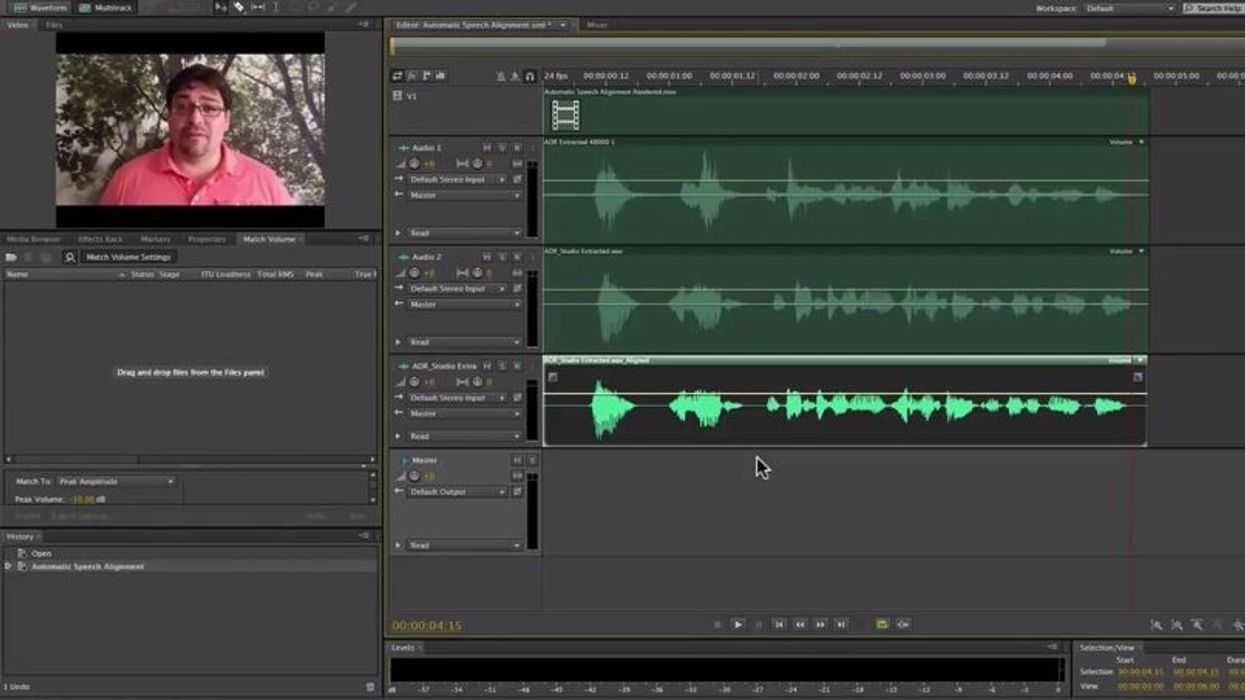Having Problems Syncing ADR?
Adobe's 'Automatic Speech Alignment' to the Rescue

In theory, ADR is a relatively simple process. You bring your actors into a vocal booth, show them their original performance, then record a clean take of them mimicking that original performance. Easy right? Well once you start replacing the production sound with the newly-recorded audio, things can start to get tricky. Oftentimes minuscule variations in performance can lead to ADR that just doesn't work because of barely-perceptible sync issues. This can be fixed in most audio post production programs by subtly warping the audio file to match the original clip, but that process is tedious and time-consuming, and often the results still aren't up to par.
Luckily, there's a feature in Adobe Audition that will do all of that work for you with a few clicks. It's called "Automated Speech Alignment" and the good folks at PeachpitTV have a tutorial to show you how it's done.
First things first, before you ever launch Audition, make sure that you have your timeline built in Premiere Pro with both the original audio and the ADR clips. The ADR clips should be loosely aligned with the original audio, and if you can get them perfectly in sync like that, then there's really no need for the 'Automatic Speech Alignment' process in Audition. However, if you're having sync issues, then that process will save you from some major headaches.
Besides being an incredibly simple way to fix minor sync issues in ADR tracks, the technique used in this tutorial can also be used to sync dual-system audio, thus providing a practical and cost-effective alternative to programs like PluralEyes if you're using Adobe's Creative Cloud video applications.
Link: PeachpitTV2 -- YouTube











